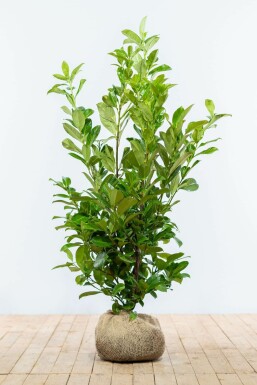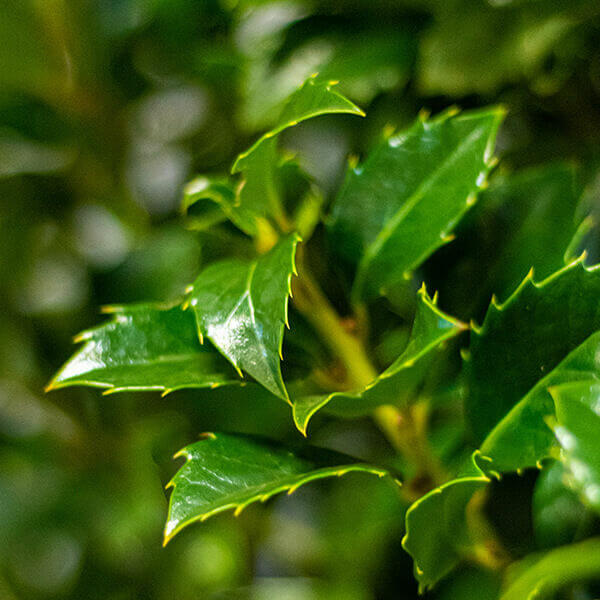Hedge Plants For Living Walls
Improve your garden's appeal with rich hedge varieties such as Yew (Taxus), Thuja, Laurel, Photinia, and Bamboo, commemorated for their structural stability and ecological benefits.
Yew and Thuja provide evergreen protection and winter resilience, while Laurel uses rapid development and broad, fragrant leaves.
Photinia includes seasonal beauty with its vibrant red foliage, and Bamboo provides a low-maintenance, tranquil atmosphere.
These hedges enhance air quality, reduce noise, and develop tranquil, private areas.
Proper planting, spacing, and maintenance guarantee energetic growth and environmental consistency.
Explore how these rich varieties can raise your garden's appeal and wellness.
Key Takeaways
Change Your Garden With Lush Hedge Ranges
- Select Yew for its thick, evergreen growth and unequaled longevity.
- Opt for Laurel for its quick development and broad leaves, making sure fast personal privacy.
- Choose Photinia for its vibrant seasonal foliage, which turns a striking dark red.
- Make use of Bamboo for a low-maintenance, winter-hardy hedge with aesthetic appeal.
- Area plants 2-3 per meter and prune routinely for optimum development and health.
Popular Hedge Plants
When changing a garden with lush hedge varieties, it's important to think about popular hedge plants such as Yew, Thuja, Laurel, and Photinia due to their special characteristics and benefits.
Yew (Taxus) is highly esteemed for its longevity and dense, green growth, making it a prime choice for withstanding landscapes.
Thuja is kept in mind for its evergreen foliage and robust winter resilience.
Photinia adds seasonal vibrancy with red leaves that darken in time, creating dynamic visual appeal.
Laurel offers rapid development and fragrant, broad leaves, ideal for quick personal privacy.
Additionally, Bamboo is an exceptional option for atmosphere, offering a low-maintenance, winter-hardy alternative that boosts the garden's aesthetic with its sophisticated, swaying walking canes.
These choices cater to a range of horticultural requirements and preferences.
Benefits of Garden Hedges
Garden hedges offer a wide variety of benefits, making them an important addition to any landscape. These natural barriers are cost-efficient to implement and supply substantial wind defense, improving air blood circulation and contributing to noise reduction. The dense foliage of hedges like Thuja and Beech ensures personal privacy by obstructing exposure, creating a serene and secluded environment.
Hedges likewise play a vital function in microclimate guideline, supplying a steady environment that fosters plant growth and reduces temperature fluctuations. Their intricate leaf structures filter pollutants, enhancing air quality and contributing to a much healthier garden environment.
Furthermore, hedges master sound reduction, soaking up and deflecting sound waves to lower ambient noise levels. This dual functionality of providing both acoustic and visual privacy boosts the general serenity and aesthetic appeal of any garden.
Planting and Maintenance Tips
For an effective hedge, meticulous preparation of the planting area is vital. Make sure the soil has proper pH and drain to support strong root development.
Area the plants appropriately for the selected species. Water the hedge regularly during its preliminary development stage, adjusting as required with seasonal changes.
Execute a methodical bug control and disease prevention technique, utilizing organic or chemical treatments when necessary. Routinely examine for aphids, termites, and fungal infections.
Apply mulch to retain wetness and reduce weeds. Seasonal pruning promotes dense growth and air circulation, vital for plant health.
Following these standards will assist you cultivate a lively, well-kept hedge that improves the charm of your garden.
Spacing and Cutting Standards
Spacing and Cutting Standards
Proper spacing and cutting are crucial for cultivating healthy, visually appealing hedges. Adequate spacing ensures each plant receives sufficient nutrients, light, and airflow.
Follow these guidelines for optimal hedge maintenance:
- Spacing: Position hedge plants 2-3 plants per meter to encourage robust growth.
- Pruning Strategies: Routine pruning is necessary for keeping wanted hedge height and shape. Cut brand-new growth in summertime and cut back older wood during winter.
- Seasonal Care: Change trimming methods and schedules according to seasonal requirements to ensure plant health.
- Hedge Height: Frequently display and cut to preserve the desired hedge height and attain consistent looks.
Complying with these actions will guarantee your hedge flourishes, enhancing both the appeal and functionality of your garden.
Picking the Right Hedge
Selecting the Right Hedge
Selecting the appropriate hedge includes evaluating aspects such as mature height, foliage density, and environmental strength. Effective hedge plant selection needs understanding each species' development characteristics and site-specific flexibility.
For example, Yew (Taxus) offers exceptional longevity and dense growth, while Thuja is significant for its winter resilience. In addition, considering maintenance requirements is crucial; fast-growing types like Laurel or Privet demand routine trimming, whereas low-maintenance options like Bamboo or Ivy may be more suitable for those looking for minimal maintenance.
Environmental aspects such as soil type, light availability, and wetness conditions ought to likewise guide the choice process. This mindful approach guarantees the picked hedges will flourish, supplying both visual and functional advantages to the garden landscape.
Delivery and Planting Recommendations
To guarantee your hedge plants flourish, they must be provided by specialized couriers and planted immediately upon arrival.
Follow these necessary steps for effective planting:
- Soil Preparation: Improve the soil with organic matter to improve drain and nutrient content.
- Planting Depth: Produce a trench two times the width and equivalent to the depth of the root ball.
- Watering Strategies: Water thoroughly after planting, keeping the soil regularly wet but not filled.
- Mulching: Apply a layer of mulch to keep wetness and reduce weeds.
Customer Assistance and Service
Given the essential function of timely support in horticultural pursuits, our client assistance group is offered 6 days a week through telephone, e-mail, and social media to provide professional suggestions and swiftly deal with any concerns. Their devotion to fast action times ensures consumer complete satisfaction by fixing inquiries related to plant health, ideal planting methods, and maintenance schedules.

Response Time
Within 48 hours
This detailed support group, reinforced by a stellar 9.3/ 10 client score, highlights our commitment to boosting the gardening experience for every client.
Often Asked Concerns
The Length Of Time Does It Consider Hedge Plants to Develop?
Hedge plants generally require one to three years to become completely established, with the specific period varying by species and growing conditions.
Effective care during this crucial duration is necessary for robust growth. Consistent watering, alert weed control, and appropriate fertilizer application are critical in promoting strong root advancement.
For instance, fast-growing types like Laurel might develop quicker, while slower-growing varieties such as Yew may take longer. Thorough upkeep accelerates the establishment process, leading to healthy and dense hedges.
What Are the very best Hedge Plants for Personal Privacy?
The question of the finest hedge plants for personal privacy involves examining evergreen and deciduous options.
Evergreen hedges like Thuja, Laurel, and Cypress supply year-round coverage, ensuring constant personal privacy.
In contrast, deciduous hedges such as Beech provide seasonal personal privacy, shedding leaves in cooler months.
Secret maintenance suggestions for privacy hedges consist of regular cutting, fertilizing in spring, and appropriate spacing-- usually 2 to 3 plants per meter.
Additionally, constant watering and diligent weed elimination are crucial for promoting healthy, thick development.
Can Hedge Plants Attract Wildlife to My Garden?
Yes, hedge plants can bring in wildlife to your garden by offering essential advantages like shelter, food, and nesting sites, therefore improving local biodiversity. Yew, holly, and laurel are outstanding for attracting birds, while ivy supports a range of insects.
Nevertheless, it is essential to keep in mind that there are some drawbacks, such as increased upkeep to manage insects and routine upkeep. Thoroughly selecting and keeping hedge varieties can assist stabilize these benefits and disadvantages, eventually cultivating a sustainable and lively community in your garden.
Are There Any Blooming Hedge Plants Available?
Yes, there are flowering hedge plants available that can improve the appeal of your garden.
For example, Elaeagnus, also referred to as Olive Willow, produces aromatic white flowers in the fall, adding a touch of beauty.
Photinia, another popular option, showcases vibrant red leaves that develop into an abundant green, developing a dynamic visual effect throughout the seasons.
To guarantee these plants grow, it's necessary to practice appropriate pruning techniques and seasonal upkeep, such as cutting brand-new development in the summer and cutting back in the winter.
These steps will assist keep the health and aesthetic appeal of your flowering hedges.
How Do I Avoid Bugs in My Hedge Plants?
To prevent pests in hedge plants, employ natural insect control techniques and preserve appropriate hedge care. Present helpful bugs like ladybugs, which prey on harmful insects, to develop a balanced ecosystem.
Regularly examine your hedges for indications of invasion and quickly remove any affected parts to prevent the spread. Guarantee the health of your hedges by using well balanced fertilizers and supplying adequate water.
Utilize mulching to maintain soil moisture and proper spacing to reduce plant tension and promote robust growth. These practices jointly assist in decreasing bug issues and maintaining a healthy hedge.
Conclusion
In essence, picking the ideal hedge ranges such as Yew, Thuja, and Laurel can change any garden into a peaceful haven. These Article source plants provide year-round greenery, boost visual appeal, and offer practical advantages like noise reduction and wind defense.
Appropriate planting methods, accurate spacing, constant watering, and seasonal cutting are important for optimal development.
Trusted shipment services and expert consumer support ensure a smooth experience from purchase to planting, making it simpler than ever to raise your outdoor area.
Garden hedges provide a wide variety of benefits, making them an important addition to any landscape. These natural barriers are affordable to carry out and offer significant wind security, enhancing air blood circulation and contributing to noise decrease. The dense foliage of hedges like Thuja and Beech makes sure privacy by blocking visibility, developing a tranquil and secluded environment.

Pruning Strategies: Routine pruning is vital for preserving desired hedge height and shape. Cut brand-new growth in summer season and cut back older wood throughout winter.